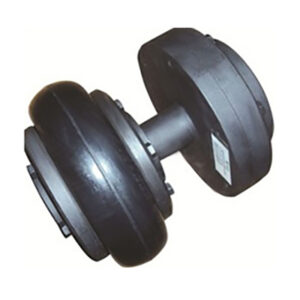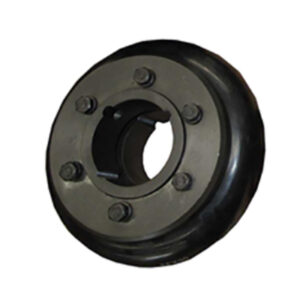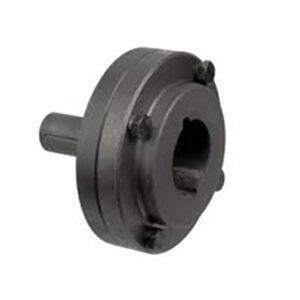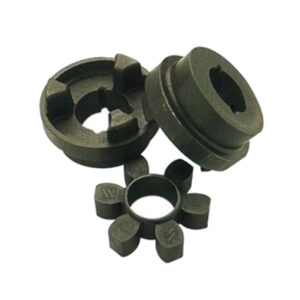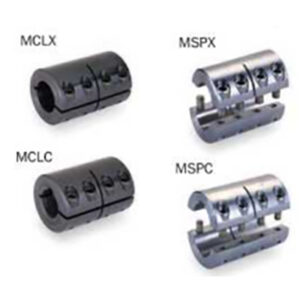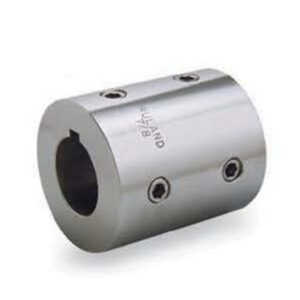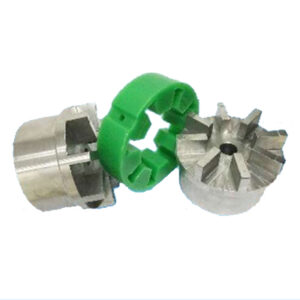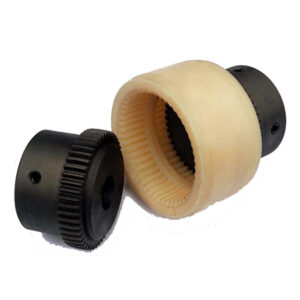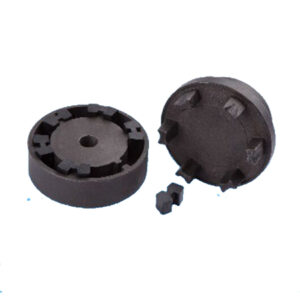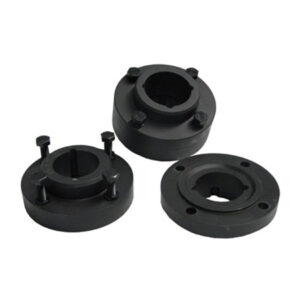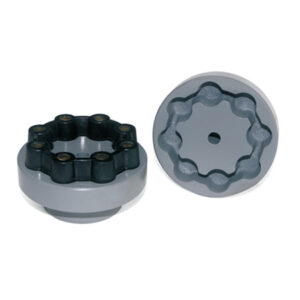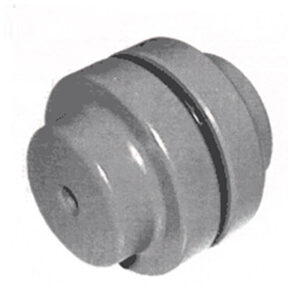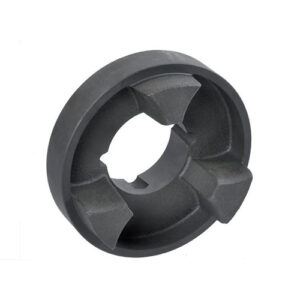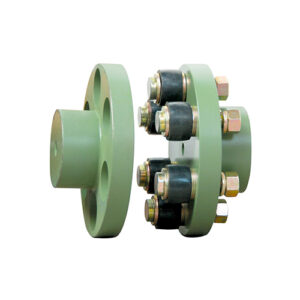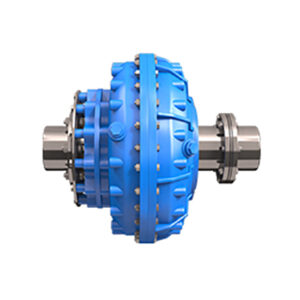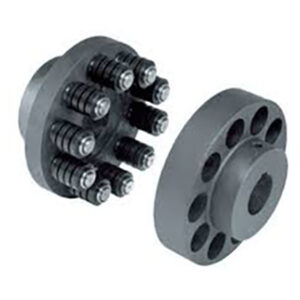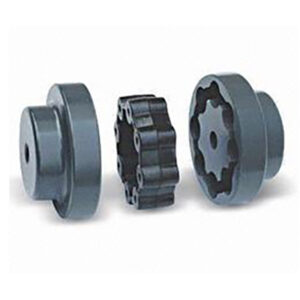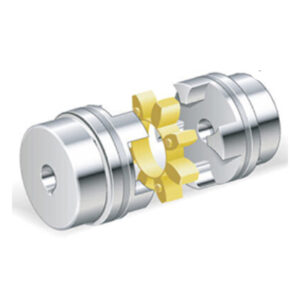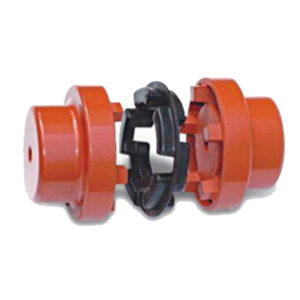Couplings
Rigid Couplings
A rigid coupling is referred to as that coupling which is usually used whenever there are two shafts that seem to be perfectly aligned with each other. These couplings are found being suitable in close alignment only. For example muff coupling, Split-muff coupling, and Flange coupling are some of the well-known example of rigid coupling.
Spacer Couplings
Typically, a spacer coupling is used to connect two shafts with fully supported ends. The spacer creates a clearance between the shaft ends that provides ease of installation and maintenance. Spacer couplings are made from alloy steel or stainless steel. These spacer type couplings are designed to accommodate angular, axial and parallel misalignments.
- Compact and rugged.
- Low inertia.
- High torsional stiffness.
- Wear-free, long-lasting and reliable.
- Flexibility of hub connection on the shaft.
- Customizable in tension for specific DBSEs.
- Lengths up to 3 m without the use of intermediate supports.
F Flexible Couplings
High Flexible Tire Couplings of all kinds ( F40, F60, F80, F90, F100, F110, F120, F140, F160, F180, F200, F220, F250)
- Material: cast iron GG25, GG20 steel: C45
- Made up of 3 parts: 2 couplings and one tyre body.
- Size from F40-F250. and Type: “B”, “F”, “H”.
- Working temp: -20~80ºC
- Transmission torque:10-20000N.M
- Axial misalignment: D*2%
- Radial deviation: D*1%
- Angular misalignment: 3°-6°
- Application: tire couplings are usually used in wet, dusty, udner attact, vibration, rotating and complex working condition. like: diesel pump
- Installation: easy on, easy off.
- Maintenance: no need for lubricating and durable.
Gear Couplings
The gear coupling is referred to as a modified version of the flange coupling, which can transmit high torque due to the larger size of the teeth. In these types of shaft coupling, the flanges as well as the hub are found to be assembled separately together instead of any single part as a flange coupling.
During its construction, each joint is found to have a 1:1 gear internal ratio along with an external gear pair. And gear coupling is found to be limited to angular misalignments of around 0.01-0.02 inch in parallel as well as in 2 degrees angular. Gear couplings, as well as universal joints, are the ones that are found to be used for similar applications. These are those couplings which are mostly used in heavy-duty applications where the torque transmission is found to be required to be the highest.
Fenaflex Spacer Couplings
Fenaflex Spacer Couplings are highly flexible, non-lubricated couplings that withstand the large number of misalignments found on all aircraft and provide simple installation and inspection without interrupting the drive. The coupling also provides excellent vibration-damping performance while reducing vibration and torsional shock.
HRC Couplings
HRC Couplings are essentially general-purpose couplings with a flexible component that allows for greater misalignment.
The parallel misalignment can be up to 0.5 millimeters
Axial misalignment up to 1.7 millimeters
Due to their unique style, HRC Couplings can accommodate larger shafts. This can make them a more cost-effective option.
Tyre coupling
Applications
Industrial Machinery: Used in various industrial applications such as pumps, compressors, generators, and conveyor systems.
Automotive Industry: Found in automotive drivetrains and other vehicle components.
Fluid Couplings
A fluid coupling is referred to as a hydraulic fluid coupling which seems to be a hydrodynamic device that is used to transmit the rotating mechanical power through the acceleration as well as the deceleration of the hydraulic fluid.
PIN Couplings
Bushed Pin-type coupling is referred to as the one which is most commonly used for slight parallel misalignment, angular misalignment, or any type of axial misalignment of any of the two shafts. This type of coupling is found to be a modified version of rigid flange coupling. These are found consisting two halves which are usually dissimilar in the construction bolts which are known as pins, rubber bushes that are used over pins. There seems to be a clearance of around 5 mm within the faces of both halves of the coupling. There seems to be no rigid connection within them whether the drive is done through compressed rubber or leather bushes.
MH Couplings
Adapts to shaft misalignment, parallel offset 0.2 mm. and angle 0.3°.
Spline, hex, round, set screw or keyway holes are available at extra charge.
Coupling hub material made of cast iron.
Find rated torque by.
Rated torque (Nm.) = (9.55 x P x S.F.) / N
where P = drive power rating (kW) and N = speed (rev./min)
Select a coupling with the same or higher torque.
Check hub bore capacity.
Check the allowable speed.
Flexible Jaw Type Couplings
A jaw coupling consists of two metal hubs and an elastomer (spider). The two metal hubs are generally 45-gauge steel, but the aluminum alloy is also used in cases where sensitive loads are required. The elastomeric jaw coupling uses the elastic element placed between the two halves of the coupling hubs to realize the coupling of the two halves of the coupling.
NM Couplings
NM coupling consists of two hubs and a flexible ring able to compensate for all types of shaft misalignments. The flexible rings are made of Nitrile rubber (NBR) which has a high internal damping characteristic that enables to absorb and resists oil, dirt, grease, moisture, ozone, and many chemical solvents.


